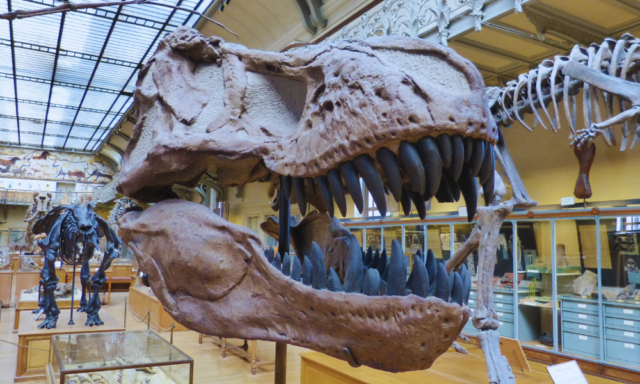
Augmented Reality (AR) has been the talk of the town for years, hyped as the answer to a more dynamic and immersive visitor experience. Let’s take a look at a handful of museums, large and small, around the globe to find out how they’re presently employing this emerging technology. It’s good to check in from time to time and see what’s working in the wild.
Holocaust Museum Los Angeles
Holocaust Museum LA is taking advantage of its proximity to Hollywood, collaborating with visual effects artists Craig Barron and Ben Grossmann of technology studio Magnopus to help visitors virtually experience daily life behind the walls of Sobibor extermination camp.
Visitors are invited to download the Sobibor AR app and follow actor Ben Feldman, who serves as a holographic guide providing historical context and a closer look at the camp, as experienced by Polish survivor Thomas Blatt. Blatt was able to escape Sobibor in 1943 and create a detailed map of the layout, which serves as the basis for the meticulous reconstruction by the museum.
The exhibit also includes audio of the camp’s environment to further enhance the immersive experience. Notably, and appropriately, this app avoids any type of gamification and instead focuses on providing a serious educational experience.
Source: LA Times
National Palace Museum of Korea
Visitors to the National Palace Museum can now virtually navigate through significant moments in Notre-Dame’s history at “Notre-Dame de Paris, the Augmented Exhibition: 850 Years of History and Resilience at Your Fingertips.” (Alternate description of the exhibition in English here.)
Developed by French start-up Histovery in collaboration with the cathedral’s team, this free exhibition incorporates Samsung tablets (aka HistoPads), which visitors can use to scan 21 time portals and journey through significant moments in Notre-Dame’s history, as if playing a video game. Visitors can choose from numerous language options and embark on a virtual treasure hunt that encourages exploration of the cathedral’s storied history.
The popular exhibition has already made stops in 12 cities around the world since 2022.
Source: The Korea Times
Plantasia Tropical Zoo
The “Giants of the Past” exhibit at Plantasia Tropical Zoo in Swansea, Wales uses AR technology to bring prehistoric creatures to life. The exhibit was developed with a £90,000 [$117,000 USD] investment and technological help from Magic Memories.
Visitors can explore life-sized replicas of ancient giants such as Sarcosuchus Imperator, Titanoboa, and Arthropleura. By scanning QR codes placed around the exhibit with their mobile devices, they can see these creatures animated in stunning detail.
Source: Swansea Bay News
Academy Museum of Motion Pictures
As a complement to the John Waters: Pope of Trash exhibition at the Academy Museum of Motion Pictures, visitors can use selfie filters to see themselves in John Waters character-style hairdos, accessories, facial hair, and makeup.
No app is required for the John Waters AR experience developed by Bluecadet — just click a link, and the web-based AR will open a front-facing camera and show all the transformation options. Visitors can then save their photos to share the experience.
Source: Bluecadet
Mercer Labs Museum of Art and Technology
Mercer Labs has made quite a name for itself as a pioneer in immersive experiences that blend art and technology through AR. On view now is the “Limitless” exhibit by Roy Nachum, the museum’s co-founder.
“Limitless” allows visitors to step inside Nachum’s artistic vision and explore his childhood memories and perspectives on nature through interactive AR elements. The installations use advanced AR technology to transform static artworks into mesmerizing, interactive experiences. In addition to visual and tactile interactions, the museum offers a 4D listening room to further enhance the sensory experience.
Source: Mercer Labs




